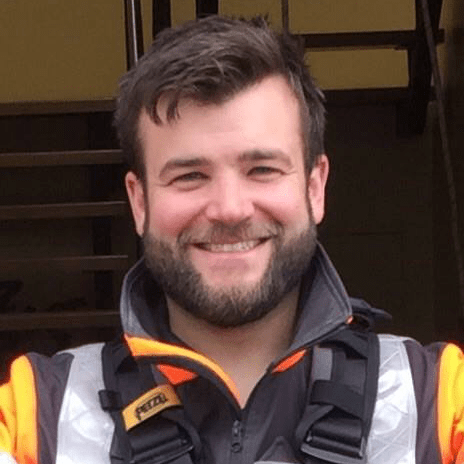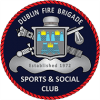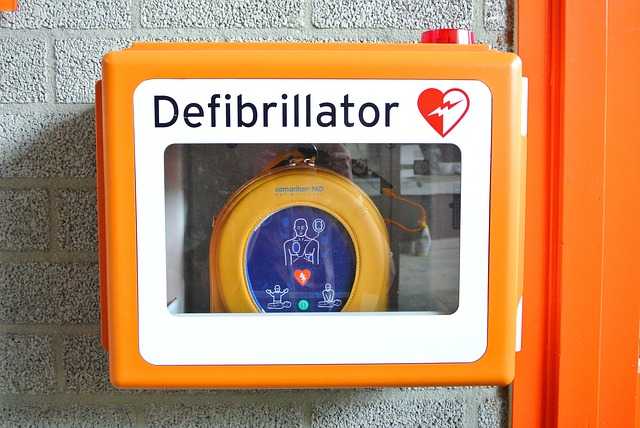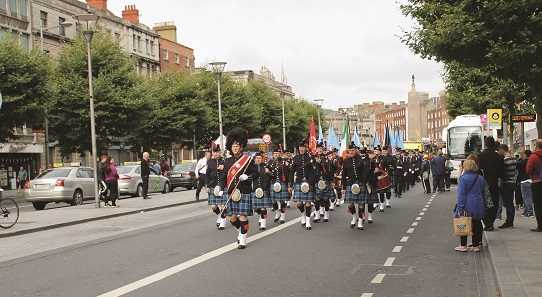From planting the seed for Firecall to entertaining Russian firefighters after the cold war, retired D/O Damien Fynes recounts an interesting and eventful life.
One might say that Damien Fynes has had both a fortunate and interesting life. Take an incident that happened before he ever joined the fire brigade. Back in 1974 his wife Ann worked in the GPO, and Damien would pick her up and stroll down Talbot Street to catch the bus. On May 17th 1974 the buses were on strike. Damien had ten shillings in his pocket and on a whim, instead of making for Talbot Street, they went for a drink in a pub on North Earl Street. Not long after they sat down, one of three bombs detonated on Talbot Street near the junction with Lower Gardiner Street, killing twelve people immediately, in an event that would become known as the Dublin and Monaghan bombings.
A life recalled
Damien joined DFB later that year and was posted to B watch Dorset Street for two years alongside Martin O’Brien, who he describes as one of the finest firefighters he ever worked with. It was during these initial years that he and Martin decided to launch a publication which started off as Brigade Call, eventually morphing into the magazine in your hands today. Having moved to Buckingham Street when Dorset Street closed, Damien began to move up through the ranks, first securing promotion to sub officer on B watch and then D watch, where he would remain for the best part of his career. Further promotions resulted in a move to Dún Laoghaire as station officer on D watch, and he retired from No 3 having served as a D/O on D and then C watch.
“Buckingham Street had an atmosphere that was incredible, really close,” he recalls. “When we went in there were stables, and they even had an open water storage tank in the yard that was made up during the war. We went on a fire call from Buckingham Street [one day], and when we came back they had a turntable ladder outside the door – the chimney had gone on fire in the station while we were out, and they had to turn out Tara Street!”
In early 1978, just after his return to the job following an ankle break, he was among those who responded to a fire at Burgerland on O’Connell Street. A number of children were reported to be trapped in a crèche on the top floor – Damien and several other firefighters, including sub officer Fergus Ingram, went in to rescue them, though they had to turn back due to the intense heat (later it emerged that the children had been removed safely from the burning building). During the mop up operation, while he was removing a neon sign with Tommy Giffney, the sign swung loose and spun Damien’s ladder. Falling heavily on the ground, he lost all sensation in his legs, and was rushed to Jervis Street.
Although he left the hospital later than evening on foot to catch a bus to Raheny, Damien later discovered, after a trip to climb the Nine Dragons in Hong Kong, raising funds for DEBRA Ireland with the assistance of DFB many years later, that the accident had resulted in several crushed discs in his back. Luckily a five hour operation proved successful and, despite an offer of early retirement, Damien returned to work, keen to get back to the job he loved.
That attitude was prevalent throughout his career – he enjoyed the varied life in Dublin Fire Brigade and all that came with it. “It’s all about being personable, how you deal with people,” he says. “When I worked on the ambulance, you could always get the homeless people on your side by getting them to sing a song; you’d have them roaring singing by the time you reach Jervis Street or one of the other hospitals. Things seemed to be more harmless then.”
It was also that personable attitude that resulted in an invitation to France on behalf of the French Fire Brigade. While he was serving in No 3 as a D/O, there was a knock at the door one day from a French firefighter and his wife. Having invited the visitors in for coffee, Damien then fired up the D/O’s car and brought them on a mini-tour of the city. Three weeks later Damien, alongside two other firefighters, received an invitation to France to take part in an event celebrating the French fire service. Welcomed as VIPs, they took part in a line up inspected by the president of the French fire brigade, the only non- French personnel given that honour.
Founding fathers
Alongside Brigade Call, as the Sports and Social Club publication was first known, Damien was also a founding member of another DFB institution – the Pipe Band, the result of a simple conversation with John McBride, sparked from marching behind a pipe band in the Dublin St. Patrick’s Day parade. “Did you ever get an idea that just lights you up, and you become so enthused with it that you’re thinking about it all of the time? That’s what happened there,” he says.
Getting the band up and running was no mean feat, particularly during the 1980s – set up costs were estimated at £40,000. Despite initial difficulties, a plan was enacted which involved a loan from the sports and social club, paid back through the weekly subscriptions of members, the same model still in use today. A committee was elected, with Damien taking the role of chairperson, and Joe Brennan acting as secretary. Joe, who later retired as a D/O in Finglas, was one of the driving forces behind the band’s success, alongside Barney Mulhall, Tony Daly (now deceased) and Gerry Aldwell.
Their first major event, however, almost ended in disaster. Joe Brennan was approached about a gig in the National Concert Hall, with a brochure and performers to be funded through advertising organised by an external company. Two weeks beforehand, they got a call to say that the deal was off. Damien was faced with paying Damien leading of the group, and with no mobile phones the phone was usually brought to the table. “By the end of the week these Russians thought I owned the city because ‘Damien, phone call for you’ – everybody knew me!” he explains.

Damien Fynes
Following the parade on St. Patrick’s Day, the group returned to Wynns Hotel where the visiting firefighters were staying, and Damien was summoned upstairs to attend to an urgent matter with one of the generals, bringing Peter Barriscale along with him for support. Both were brought to the general’s room and told to sit on the bed. Perhaps understandably uneasy and confused, they watched as the door suddenly burst open and a dancing Russian entered playing the accordion with great gusto, followed by the general in full dress uniform. It transpired that the generals had experienced such a great time, they wanted to present Damien with the Russian flag, a huge honour he was assured.
Their positive experience also meant that an invitation to Russia was extended to the band, and a group set off for Moscow from Shannon in May. Met at the airport by a Colonel from the Ministry of the Interior, they made an instant impression on several older women cleaning in the airport, who fled as the DFB contingent walked through. Confused, they asked what was going on. The colonel replied, saying “the last time they saw uniforms like yours, it was the Germans.”
During their tour around Moscow and its environs the DFB group were treated as the most important of VIPs, aided by the presence of General Rubtsov, a national hero – wined and dined at the opulent Chudov Monastery, shown around the Russian cosmonaut training centre, brought the transport costs of the Garda Band who had been hired to perform, and for the hall itself. The committee went into action. Tickets were drawn down and sold by members and the brochure was printed on a Communist Party print press, arranged by Tony Daly, who also took on the role as MC in the concert hall. In total, the band made £800 profit. Refusing to touch that money, he explains that he spent around two months’ worth of mortgage payments in buying drinks for those who helped make the night happen. “Without Ann’s involvement or without me putting my house on the line, it would never have happened,” he says.
Entertaining the Russians
One of Damien’s stand out memories is both highly entertaining and almost unbelievable. The year was 1993, the Cold War wasn’t long over, and American firefighters were coming to Dublin to march in the St. Patrick’s Day parade. In the spirit of reconciliation, an invitation was also extended to the Russian fire brigade through Ann’s brother-in-law, who had business in Russia, with their air tickets sponsored by another brother. Seventeen stepped off the plane in Shannon, including 13 generals and a member of the Ministry for the Interior (formerly the KGB), who sent a fax before their arrival requesting that his presence remain a secret. Included in the party was one General Rubtsov, who had received acclaim as the commander in charge of the fire in Chernobyl in 1986.
“That was the start of the biggest adventure of all,” Damien recalls. The following week would prove to be an interesting one, filled with sightseeing, functions in Guinness and the Russian embassy, and some memorable events that must remain untold. Damien was placed in charge of the Russian contingent, as it had been his idea to invite them over, showing them around the city and ensuring they were well fed (various establishments around the city fed the Russians at no cost). Damien often took calls at the restaurants or pubs from other members on a shopping expedition from which most members of the group returned with pairs of skis for $1 (despite the absence of snow in Ireland) and were guarded by a unit of Spetsnaz (Russian special forces) at their hotel throughout their stay.
During a visit to the fire brigade museum, they were shown a section containing all of the presents given to the general in Ireland, including a photo of Damien and the group. A musical session in Moscow’s Gorky Park with the Russian Army No 1 band and a feast at Mikhail Gorbachev’s summer home rounded off a trip that nobody involved has ever forgotten. Though another Russian visit to Ireland was planned, a visa issue meant that the Russians never boarded their plane, and they never heard from their friends in Moscow again.
Retired Life
These days, Damien still keeps busy. An active member of the Retired Members Association, he also continues his role as drum major with the Pipe Band, which says is still looking for recruits, and occasionally meets with firefighters from other countries, showing them around Dublin city. His sons Dan and Chris have both followed their father into the job, and he has shared with them his own personal motto – never take no for an answer, one that has served him well throughout the years in the fire brigade (and outside).
“As I said to Dan, if you’re going to be the boss, be the boss – take charge, do. Just because somebody tells you that it hasn’t been done before doesn’t mean it can’t,” he says. “The two things that I started, the magazine and the band, are still going strong. I’d like to think that I contributed something to the brigade. And how many people can say that?”






